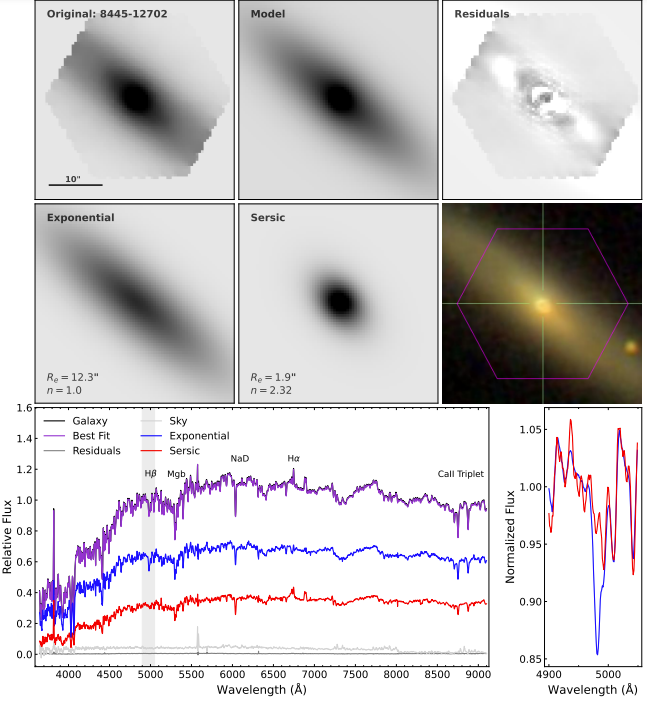Many galaxies display clear bulges and discs, and understanding how these components form is a vital step towards understanding how the galaxy has evolved into what we see today. The BUDDI-MaNGA project aims to study galaxy evolution and morphological transformations through the star-formation histories of the bulges and discs. We have applied our BUDDI software to galaxies from the MaNGA Survey in the SDSS DR15 in order to isolate their bulge and disc spectra, from which we derived their stellar populations. The image below shows an example of the fit to MaNGA galaxy 8445-12702, showing along the top row the white light image from the datacube, the best fit model and the residual image. The middle row shows the fits to the disc and bulge, and the bottom row gives the spectra extracted for these two components in blue and red, respectively, along with the integrated spectrum from the datacube (black) and the integrated model spectrum from the best fit (purple).

To date, this work provides the largest sample of clean bulge and disc spectra extracted from IFU datacubes using the galaxies light profile information, and will form the basis for a series of papers aiming to answer open questions on how galaxies have formed and evolved, and the role of their individual structures.
Information on the BUDDI-MaNGA project can be found in our Paper I (https://ui.adsabs.harvard.edu/abs/2022MNRAS.514.6120J/abstract), and our first science results studying the properties of the bulges and discs of S0s are given in Paper II (https://ui.adsabs.harvard.edu/abs/2022MNRAS.514.6141J/abstract).
Team Members
Evelyn Johnston (co-PI).
Boris Haeussler (co-PI).

